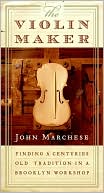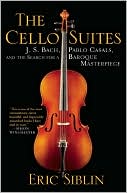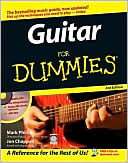Violin Maker: Finding a Centuries-Old Tradition in a Brooklyn Workshop
Search in google:
The violin does something no other instrument can do, something remarkable, magical, and evocative. It is the mathematical marvels of Bach, the moan of a Gypsy melody, the wounded dignity of Beethoven's Concerto in C Major. It is Isaac Stern playing a nursery rhyme. It is the closest thing there is to the human voice. No other instrument is steeped in such a rich brew of myth and lore. The making of a violin in the hands of one man, from start to finish, is also something of a miracle. On a quest to learn about what many consider the world's most perfect instrument, author and musician John Marchese befriends an old-world craftsman in Brooklyn, New York: Sam Zygmuntowicz, a man in his midforties who practices a craft that goes back centuries. Sam has built instruments for some of the world's most renowned musicians, including Isaac Stern, and professionals from all over make the pilgrimage to his studio to add their names to his waiting list. Then Sam is commissioned to build a violin for Eugene Drucker of the internationally famous Emerson String Quartet. The violin Drucker now plays is a Stradivarius, the gold standard by which all other violins are measured. The instrument Sam builds has to rival a violin made by the greatest master that ever lived. Zygmuntowicz starts by picking a block of maple from his vast collection of aged, European wood. Small pieces can cost upwards of hundreds of dollars, thousands for the best. Then the carving begins, where both the strokes and the carving tools themselves become progressively smaller and more painstaking. In the late stages, the difference between right and wrong is measured in millimeters. When all the sanding, rubbing, and final cuts are done, then comes the varnishing stage--considered by some to be the crux of Stradivari's secrets, which many think can spell the difference between a mediocre instrument and a great one. And finally, the moment both men have anticipated with apprehension: the handing over of the instrument from the artisan to the artist. This intensely human story, which moves from an ageless workshop in Brooklyn to the rehearsal rooms of Carnegie Hall and Lincoln Center, and across the globe to Cremona, the birthplace of Stradivari, opens up for the reader the insular and fascinating realm of music, musicians, and the craftsmanship that is essential to that world. Publishers Weekly Celebrated Brooklyn violin-maker Sam Zygmuntowicz recently accepted a challenging commission from violinist Eugene Drucker of the Emerson String Quartet: to make a new violin that would equal Drucker's beloved Stradivarius. Marchese (Renovations: A Father and Son Rebuild a House) documents their collaboration. He follows Zygmuntowicz through the exacting, scrape-by-scrape process of trying to transform a block of wood into an exquisitely wrought vibrating box that somehow captures the inexpressible sonic essence the finicky Drucker longs to hear. Along the way, Marchese goes on a pilgrimage to Stradivarius's hometown of Cremona and delves into the secrets behind the maestro's incomparable sound. Was it the wood? The varnish? The nap-time transmigration of his spirit into the violin under construction? Zygmuntowicz's example, Marchese finds, suggests a more prosaic, if no less marvelous, possibility that the genius of craftsmanship resides not in magic ingredients or arcane techniques, but simply in taking infinite, exhausting pains with the work, in "caring more and more about less and less." He also broaches a more inflammatory corollary: that modern violins actually sound just as good as Strads. The result is a beguiling journalistic meditation on the links and tensions between art, craft and connoisseurship. (Apr.)Copyright 2006 Reed Business Information.








